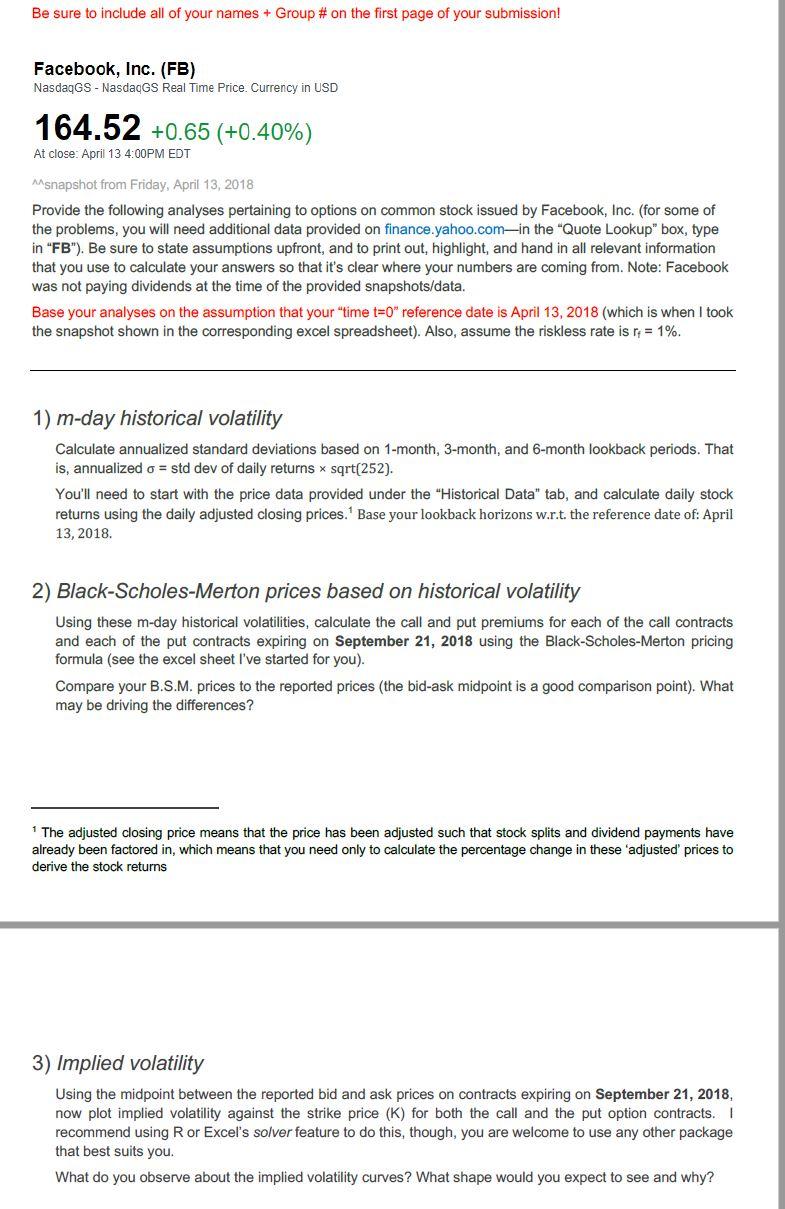
Facebook, Inc. (FB) NasdaqGS - NasdaqGS Real Time Price. Currency in USD 164.52+0.65(+0.40%) At close: April 13 4:00PM EDT Msnapshot from Friday, April 13, 2018 Provide the following analyses pertaining to options on common stock issued by Facebook, Inc. (for some of the problems, you will need additional data provided on finance.yahoo.com-in the "Quote Lookup" box, type in "FB"). Be sure to state assumptions upfront, and to print out, highlight, and hand in all relevant information that you use to calculate your answers so that it's clear where your numbers are coming from. Note: Facebook was not paying dividends at the time of the provided snapshots/data. Base your analyses on the assumption that your "time t=0 " reference date is April 13, 2018 (which is when I took the snapshot shown in the corresponding excel spreadsheet). Also, assume the riskless rate is rf=1%. 1) m-day historical volatility Calculate annualized standard deviations based on 1-month, 3-month, and 6-month lookback periods. That is, annualized = std dev of daily returns sqrt(252). You'll need to start with the price data provided under the "Historical Data" tab, and calculate daily stock returns using the daily adjusted closing prices. 1 Base your lookback horizons w.r.t. the reference date of: April 13,2018. 2) Black-Scholes-Merton prices based on historical volatility Using these m-day historical volatilities, calculate the call and put premiums for each of the call contracts and each of the put contracts expiring on September 21, 2018 using the Black-Scholes-Merton pricing formula (see the excel sheet l've started for you). Compare your B.S.M. prices to the reported prices (the bid-ask midpoint is a good comparison point). What may be driving the differences? 1 The adjusted closing price means that the price has been adjusted such that stock splits and dividend payments have already been factored in, which means that you need only to calculate the percentage change in these 'adjusted' prices to derive the stock returns 3) Implied volatility Using the midpoint between the reported bid and ask prices on contracts expiring on September 21, 2018, now plot implied volatility against the strike price (K) for both the call and the put option contracts. I recommend using R or Excel's solver feature to do this, though, you are welcome to use any other package that best suits you. What do you observe about the implied volatility curves? What shape would you expect to see and why







